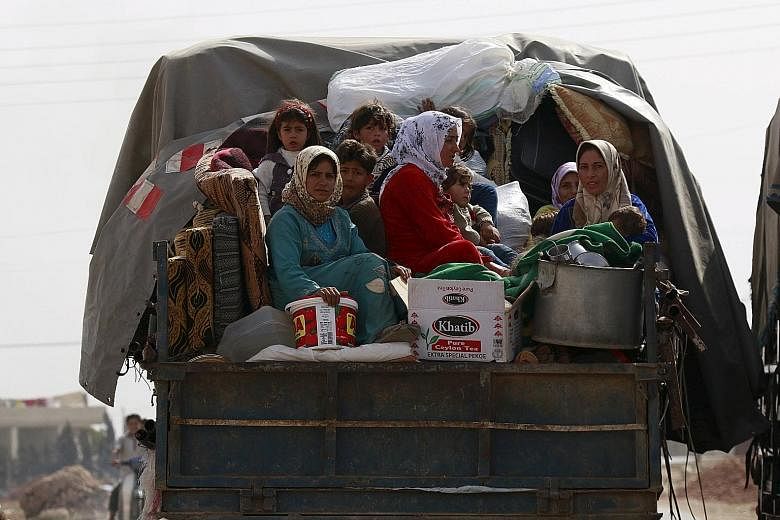WASHINGTON • The Obama administration is locked in a sharp new debate over whether to deploy United States military forces to establish no-fly zones and safe havens in Syria to protect civilians caught in its grinding civil war.
The White House remains deeply sceptical about the idea, but the growing refugee crisis in Europe and Russia's military intervention in Syria have increased pressure on President Barack Obama to take more forceful action. Secretary of State John Kerry and others renewed their push at a tense White House meeting on Monday to use air power to shield Syrians from the fighting, officials said.
But at the same meeting, which included Defence Secretary Ash Carter, a Pentagon report presented sobering estimates of the extensive military resources required to enforce such zones, leaving many at the table dubious about the wisdom of taking action.
Nonetheless, the fact that the administration is even revisiting an idea it has previously rejected - weeks after Mr Obama publicly dismissed it again - underscored the urgency of the crisis as tens of thousands of Syrians flood Europe to escape the war zone and Russian air strikes fuel the multisided conflict. It also suggested a frustration on the part of policymakers.
Among the options discussed on Monday was establishing safe zones for civilians on Syria's borders with Turkey and Jordan. Officials presented different variants, including some that had safe zones exclusively for humanitarian relief and more ambitious versions that would provide sanctuary for Syrian opposition forces allied with Americans.
But the Pentagon presentation laid out how many aircraft and personnel would be required, making it clear that there would have to be a significant escalation of US air power in the region, said officials on condition of anonymity.
The officials said the escalation would require aircraft and personnel beyond those already conducting air strikes against the Islamic State in Iraq and Syria (ISIS).
Mr Obama did not attend the meeting, which was led by National Security Adviser Susan Rice, and no formal decision was made. But advocates of a greater American role left discouraged.
Some said they suspected that Pentagon officials resistant to further US military intervention in Syria inflated the figures to persuade the President not to change his policy. Sceptics of intervention saw no indications of a reversal from Mr Obama, viewing the process as an exercise in due diligence.
The White House declined to comment on Thursday. But Mr Obama has consistently rejected the notion of a no-fly zone. Three weeks ago, he dismissed critics who have advanced what he called "half-baked ideas".
But the calls for action have only grown. Former secretary of state Hillary Clinton called this month for a no-fly zone "to try to stop the carnage". Two weeks ago, former defence secretary Robert Gates wrote an article in the Washington Post with former secretary of state Condoleezza Rice urging Mr Oba-ma to reconsider his opposition.
At Monday's meeting, officials debated how the zones could be set up solely to protect civilians, rather than as staging areas for rebels to launch attacks against government forces. Military experts cautioned that this would be difficult to enforce without large numbers of ground troops in Syria.
Russia's increasing presence in Syria complicates the picture. Imposing a no-fly zone now would raise the question of how US pilots should respond if Russian aircraft entered the no-fly zones.
But Mr Gates argued this week that Russia would defer to an assertive US approach. "Just tell the Russians, 'This is what we're going to do and stay out of the way,'" he told a Senate committee.
NEW YORK TIMES

